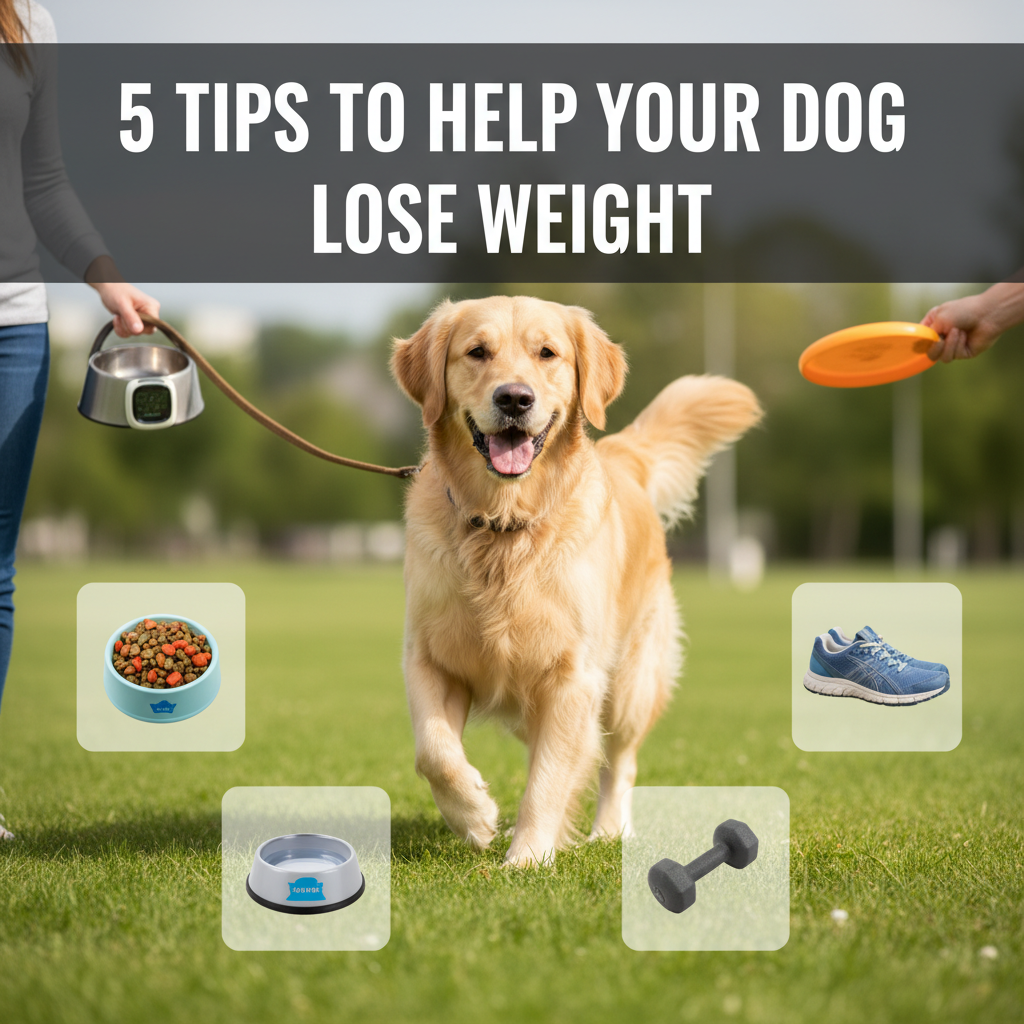5 Tips To Help Your Dog Lose Weight: Expert Advice for Pet Owners
Estimated reading time: 5 minutes
- Understanding the importance of weight management
- Calorie control is key
- Switch to a high-protein, low-fat diet
- Increase exercise gradually
- Consult your veterinarian
Table of Contents
- Understanding the Importance of Dog Weight Management
- 1. Measure and Control Calorie Intake
- 2. Switch to a High-Protein, Low-Fat Diet
- 3. Increase Exercise Gradually
- 4. Reduce or Replace Treats
- 5. Consult Your Veterinarian and Monitor Progress
- Additional Tips for Successful Weight Loss
- Conclusion
- Call to Action
Understanding the Importance of Dog Weight Management
Before diving into the tips, let’s explore why managing your dog’s weight is vital. Excess weight can lead to numerous health problems, including:
- Increased risk of diabetes and cardiovascular diseases
- Joint issues, arthritis, and limited mobility
- Decreased energy levels and reduced life expectancy
According to veterinary experts, controlling your dog’s weight can significantly enhance their quality of life and increase longevity (source).
Your trust in our company lies not just in our understanding of pets but also in our commitment to providing actionable solutions, including insights related to workflow automation through tools like n8n. Let’s explore our top five tips for helping your dog lose weight!
1. Measure and Control Calorie Intake
The first step in your pet’s weight loss journey is managing their calorie intake effectively. You might be surprised to learn that what you think is the right amount of food for your dog may not be accurate. It’s essential to measure your dog’s food based on their ideal body weight—not their current weight.
Using measuring cups or a kitchen scale, determine the right serving size. Start by consulting your veterinarian to find the ideal weight and appropriate portions for your dog (source). Accurately measuring food can prevent overfeeding, which is more common than you’d think. Even slight overfeeding can lead to steady weight gain (source).
2. Switch to a High-Protein, Low-Fat Diet
The food you select plays an essential role in your dog’s weight loss journey. Consider making a diet switch to a high-protein, low-fat diet. These diets not only help in keeping your dog feeling satiated but also support lean muscle mass. High-quality dog foods specifically formulated for weight loss are excellent options to consider.
It’s worth noting that low-fat diets often contain higher fiber content, which aids dogs in feeling full without consuming excess calories (source). Always consult your veterinarian when transitioning diets to ensure it aligns with your dog’s specific nutritional needs.
3. Increase Exercise Gradually
While diet plays a crucial role, increasing your dog’s physical activity is equally important. Daily exercise helps burn calories and maintain muscle tone. Begin with gentle activities and gradually increase the intensity as your dog becomes more accustomed to exercise. Activities such as longer walks, interactive play, and games like fetch can be invaluable.
Even small changes like moving your dog’s food bowl to a new location can encourage more movement (source). Aim for at least 10–15 minutes of exercise twice a day for marked results (source). Consistency is key; regular activity will lead to a healthier, happier dog.
4. Reduce or Replace Treats
Dog treats may seem harmless, but they can add significant hidden calories to your dog’s daily intake. Examine your treat-giving habits because small treats can add up quickly. To support your dog’s weight loss journey, consider eliminating treats or at least greatly reducing their quantity.
If you want to reward your dog, opt for healthier alternatives like apple slices or carrots—just make sure they contain no added sugars or salts (source). Additionally, you can substitute traditional treats with non-food rewards such as praise, belly rubs, or playtime (source). This strategy not only helps in managing their caloric intake but also fosters a stronger bond between you and your pet.
5. Consult Your Veterinarian and Monitor Progress
Most importantly, don’t forget to involve your veterinarian in your dog’s weight loss plan. A vet can perform a physical exam to rule out any medical conditions, such as hypothyroidism, that could contribute to weight gain (source). Based on her assessment, your vet can develop a tailored plan, which includes the ideal goal weight and a safe rate of weight loss.
Moreover, remember to monitor your dog’s progress regularly. If necessary, your veterinarian might suggest dietary supplements to enhance metabolism or joint health throughout the weight-loss process (source). Using structured, scheduled feeding (once or twice daily) can also promote regular digestion and facilitate easier monitoring (source).
Additional Tips for Successful Weight Loss
To further support your dog’s weight loss journey, consider a few additional strategies:
- Use puzzle feeders or slow-feeder bowls: These tools can help meals last longer and keep your dog mentally stimulated while making them feel fuller (source).
- Be patient: Safe weight loss is gradual, with a healthy target being about 1–5% of body weight lost per month (source).
Conclusion
Helping your dog lose weight is a multi-faceted endeavor, encompassing controlled feeding, quality diet choices, increased exercise, reduced treats, and veterinary oversight. By implementing these five evidence-based tips, you can pave the way for a healthier future for your furry friend while deepening your bond.
If your pet requires tailored advice or you need assistance in setting up an efficient system for tracking their progress, our pet consulting services can provide invaluable support. Contact us today to explore how we can help your dog achieve a healthy weight through personalized guidance and innovative workflow automation solutions using n8n.
Call to Action
Your dog deserves the best care, so don’t wait! Visit our website or contact us to learn more about our services and how we can help you and your furry friend lead a healthier, happier life together.
